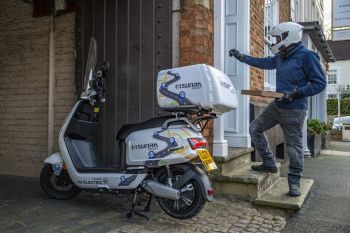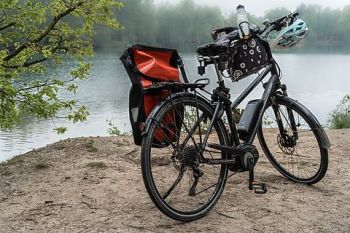Electric performance meets electrifying style: the new Silence S01+
Posted on
SOLIHULL, West Midlands 20th June 2022: Silence UK has combined its electric performance with electrifying style, with the addition of the new range-topping S01+ model to its e-moto scooter range.
Based on the S01 Connected and with performance equivalent to a 125cc motorbike, the S01+ is priced at £6,795 OTR and features a 5.6 kWh and 7.5kW motor, reaching 30mph in just 3.9 seconds and on to a limited top speed of 62mph.
For added response when you need it, S01 + offers a faster acceleration in Sport mode and features an innovative “push-to-pass” overtaking mode, which briefly increases the limited top speed to 68mph.
To suit its performance aesthetic, S01+ augments the comprehensive S01 Connected specification, with adjustable suspension, Galfer ventilated brake discs and a suite of sporty design cues, including a contrast texture seat, red detailing and Anthracite grey paint.
Connectivity comes through the dedicated Silence app, for Apple and Android devices, which allows control of important settings, such as checking charge status and activating remote lock/ unlock, as well as route planning through embedded Google Maps.
Tony Lewis, co-founder of Silence UK, said: “Silence is a stylish and practical alternative to combustion bikes, whether you’re an individual, or business user. Now with S01+, we’re adding extra sports style, for those who want their Silence to stand out from the crowd. Production of the S01+ is available in limited numbers so it’s very much first come first served!”
The S01+ is the sixth model in a growing Silence plug-in range which offers all-electric two-wheel options, to suit any budget or need.
Private riders and commuters will be drawn to the stylish S01 and new Urban spec, available in both S01and S02 trim. For professional riders and fleets, the S02 Business and S02 Business+ make the perfect work partners, with long-range battery options and a large collection of practical accessories.
All feature Silence’s patented ‘click and go’ removable and portable Silence lithium-ion battery, which can be charged through any 240V socket and can reduce running costs to a penny per mile – a massive 80% less than ICE-powered scooters.
Every Silence e-moto scooter comes with a comprehensive manufacturer’s warranty of two years for the e-moto scooter and three years for the battery, plus two years’ AA UK roadside assistance cover.
For more information on Silence, visit www.silenceuk.com






